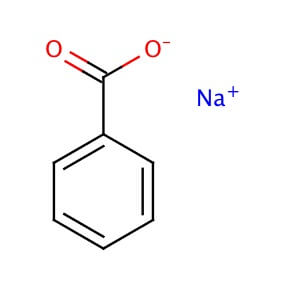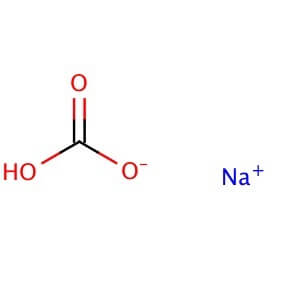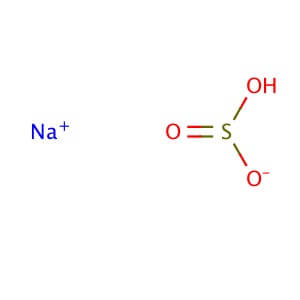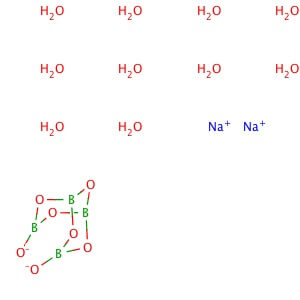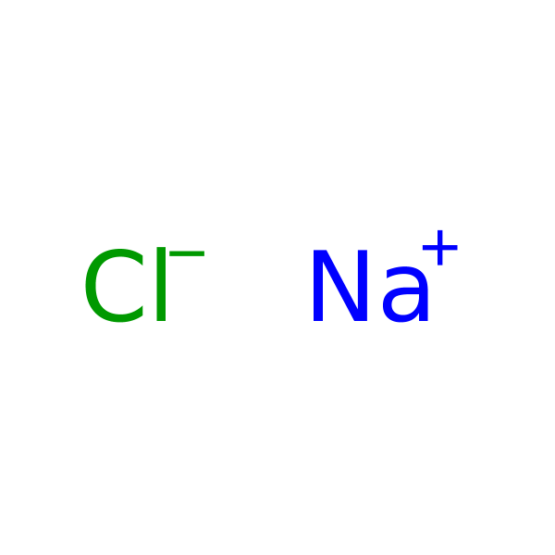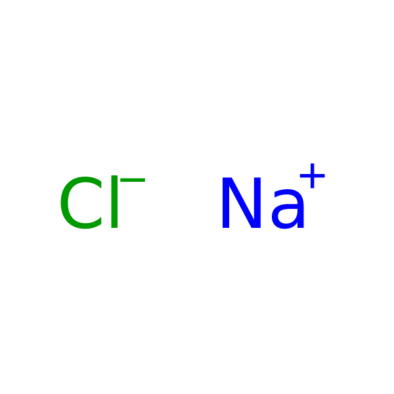Products
Showing 49–54 of 74 items
Sodium Benzoate
CAS NO: 532-32-1
MOLECULAR FORMULA : C7H5O2•Na
MOLECULAR WEIGHT: 144.10
Product Information Grade Ph Eur,BP,NF,FCC,E 211 Hill Formula C₇H₅NaO₂ Chemical formula C₆H₅COONa Molar Mass 144.10 g/mol HS Code 2916 31 00 Quality Level MQ500 Physicochemical Information Density 1.50 g/cm3 (20 °C) Ignition temperature >500 °C Melting Point 436 °C pH value 8 (100 g/l, H₂O, 20 °C) Bulk density 350 kg/m3 Solubility 556 g/l Toxicological Information LD 50 oral LD50 Rat 3140 mg/kg Safety Information according to GHS Hazard Pictogram(s) Hazard Statement(s) H319: Causes serious eye irritation. Precautionary Statement(s) P264: Wash skin thoroughly after handling. P280: Wear eye protection/ face protection. P305 + P351 + P338: IF IN EYES: Rinse cautiously with water for several minutes. Remove contact lenses, if present and easy to do. Continue rinsing. P337 + P313: If eye irritation persists: Get medical advice/ attention. Signal Word Warning RTECS DH6650000 Storage class 10 – 13 Other liquids and solids WGK WGK 1 slightly hazardous to water Disposal 3 Relatively unreactive organic reagents should be collected in container A. If halogenated, they should be collected in container B. For solid residues use container C. Storage and Shipping Information Storage Store at +2°C to +25°C. Transport Information Declaration (railroad and road) ADR, RID Kein Gefahrgut Declaration (transport by air) IATA-DGR No Dangerous Good Declaration (transport by sea) IMDG-Code No Dangerous Good Specifications Assay (acidimetric, calc. on anhydrous substance) 99.0 – 100.5 % Assay (HPLC, calc. on anhydrous substance) 99.0 – 101.0 % Identity (IR-spectrum) passes test Identity (HPLC) passes test Identity (wet chemistry) passes test Appearance of solution (100 g/l, water) clear and not more intense in color than reference solution Y6 Acidity or alkalinity passes test Chloride (Cl) ≤ 200 ppm Total chlorine ≤ 300 ppm As (Arsenic) ≤ 3 ppm Hg (Mercury) ≤ 1 ppm Pb (Lead) ≤ 2 ppm Residual solvents (ICH Q3C) excluded by production process Multinuclear acids passes test Oxidizable matter passes test Water (according to Karl Fischer) ≤ 1.5 % Sodium Bi Carbonate
CAS NO: 144-58-8
MOLECULAR FORMULA: NaHCO3
MOLECULAR WEIGHT: 84.01
Alternate Names: Sodium hydrogen carbonate Application: Sodium bicarbonate is a commonly used laboratory pH neutralizer that reacts with acids and bases Purity: ≥99% Appearance : Powder Physical State : Solid Solubility : Soluble in water (50 mg/ml). Insoluble in ethanol. Storage : Store at room temperature Melting Point : 300° C Density : 2.16 g/cm3 at 20° C Refractive Index : n20D 1.50 Ki Data : CA IV: Ki= 6.6 mM (human); CA I: Ki= 12 mM (human); CA IX: Ki= 13 mM (human); Astrosclerin-3: Ki= 22.8 mM (human); CA II: Ki= 85 mM (human) pK Values : pKa: 6.37, 10.25 in carbonic acid(25°C) Sodium BiSulphite
CAS NO: 7631-90-5
MOLECULAR FORMULA: NaHSO3
MOLECULAR WEIGHT: 104.06
Molecular Formula: NaHSO3 Molecular Weight: 104.06 Alternate Names: Sodium hydrogensulfite, mixture of NaHSO3 and Na2S2O5 Application: Sodium bisulfite, mixture of NaHSO3 and Na2S2O5 is an antioxidant and antimicrobial agent for DNA methylation studies Appearance : Powder or crystalline or crystalline powder Physical State : Solid Solubility : Soluble in hot water (very), cold water (very), and alchol (slightly). Storage : Store at room temperature Melting Point : 300° C Density : 1.48 g/cm3 Sodium Borate Decahydrate
CAS NO: 1303-96-4
MOLECULAR FORMULA : Na2B4O7 10H2O
MOLECULAR WEIGHT : 381.37
Alternate Names: Borax Purity: ≥99% Appearance : Powder Physical State : Solid Solubility : Soluble in water (38.1 g/l) at 20° C, glycerol (1 g/l, room temperature), and ethanol (slightly soluble). Insoluble in acids. pH : 9.2 at 10 g/l Storage : Store at room temperature Melting Point : 62° C Boiling Point : 320° C (loses H2O) Density : 1.73 g/mL at 25° C(lit.) Sodium Carbonate Anhydrous
CAS NO: 497-19-8
MOLECULAR FORMULA : CNa2O3
MOLECULAR WEIGHT : 105.99
Description Synonyms anhydrous soda Product Information Hill Formula CNa₂O₃ Chemical formula Na₂CO₃ Molar Mass 105.99 g/mol HS Code 2836 20 00 Quality Level MQ100 Applications Application Sodium carbonate anhydrous 99.999 Suprapur®. CAS No. 497-19-8, Physicochemical Information Boiling point 1600 °C (decomposition) Density 2.52 – 2.53 g/cm3 (20 °C) Melting Point 851 °C pH value 11.16 (4 g/l, H₂O, 25 °C) Bulk density 1100 kg/m3 Solubility 212.5 g/l Toxicological Information LD 50 oral LD50 Rat 4090 mg/kg Safety Information according to GHS Hazard Pictogram(s) Hazard Statement(s) H319: Causes serious eye irritation. Precautionary Statement(s) P264: Wash skin thoroughly after handling. P280: Wear eye protection/ face protection. P305 + P351 + P338: IF IN EYES: Rinse cautiously with water for several minutes. Remove contact lenses, if present and easy to do. Continue rinsing. P337 + P313: If eye irritation persists: Get medical advice/ attention. Signal Word Warning RTECS VZ4050000 Storage class 10 – 13 Other liquids and solids WGK WGK 1 slightly hazardous to water Disposal 14 Inorganic salts: Container I. Neutral solutions of the these salts: Container D. Before placing in Container D, check the pH with pH-Universal indicator strips (Item No. 109535). Safety Information Categories of danger irritant Storage and Shipping Information Storage Store at +2°C to +30°C. Specifications Purity (metallic) ≥ 99.999 % Assay (acidimetric) ≥ 99.5 % Chloride (Cl) ≤ 10 ppm Phosphate (PO₄) ≤ 0.05 ppm Silicate (SiO₂) ≤ 5 ppm Sulfate (SO₄) ≤ 10 ppm Al (Aluminium) ≤ 0.05 ppm As (Arsenic) ≤ 0.1 ppm Ba (Barium) ≤ 5.0 ppm Ca (Calcium) ≤ 0.10 ppm Cd (Cadmium) ≤ 0.005 ppm Ce (Cerium) ≤ 0.010 ppm Co (Cobalt) ≤ 0.005 ppm Cr (Chromium) ≤ 0.010 ppm Cu (Copper) ≤ 0.005 ppm Eu (Europium) ≤ 0.010 ppm Fe (Iron) ≤ 0.05 ppm Hg (Mercury) ≤ 0.05 ppm K (Potassium) ≤ 1.0 ppm La (Lanthanum) ≤ 0.010 ppm Li (Lithium) ≤ 0.5 ppm Mg (Magnesium) ≤ 0.10 ppm Mn (Manganese) ≤ 0.010 ppm Ni (Nickel) ≤ 0.020 ppm Pb (Lead) ≤ 0.010 ppm Sc (Scandium) ≤ 0.010 ppm Sm (Samarium) ≤ 0.010 ppm Sr (Strontium) ≤ 0.10 ppm Tl (Thallium) ≤ 0.01 ppm Y (Yttrium) ≤ 0.010 ppm Yb (Ytterbium) ≤ 0.010 ppm Zn (Zinc) ≤ 0.010 ppm Sodium Chloride
CAS NO: 7647-14-5
MOLECULAR FORMULA: NaCl
MOLECULAR WEIGHT: 58.44
Molecular Formula: NaCl Molecular Weight: 58.44 Alternate Names: Sodium Chloride is also known as table salt. Application: Sodium Chloride is used in biochemistry and molecular biology applications as a component of PBS and SSC buffers. Purity:≥98% Usage : If intended for use in cell culture applications, sterilization of the solution may be necessary. Pre-diluted buffer can be dispensed into aliquots and sterilized by autoclaving. Physical State : Solid Solubility : Soluble in water (358 mg/ml at 20° C), alcohol (very slightly), glycerol (100 mg/ml), and ammonia. Insoluble in hydrochloric acid. Storage : Store at room temperature Melting Point : 801° C (lit.) Boiling Point : 1413° C Density : 2.17 g/cm3 at 20° C Refractive Index : n20D 1.54 Ki Data : Astrosclerin-3: Ki= 460 µM (Astrosclera willeyana); CA I: Ki= 6 mM (human); CA II: Ki= 200 mM (human)
Showing 49–54 of 74 items

